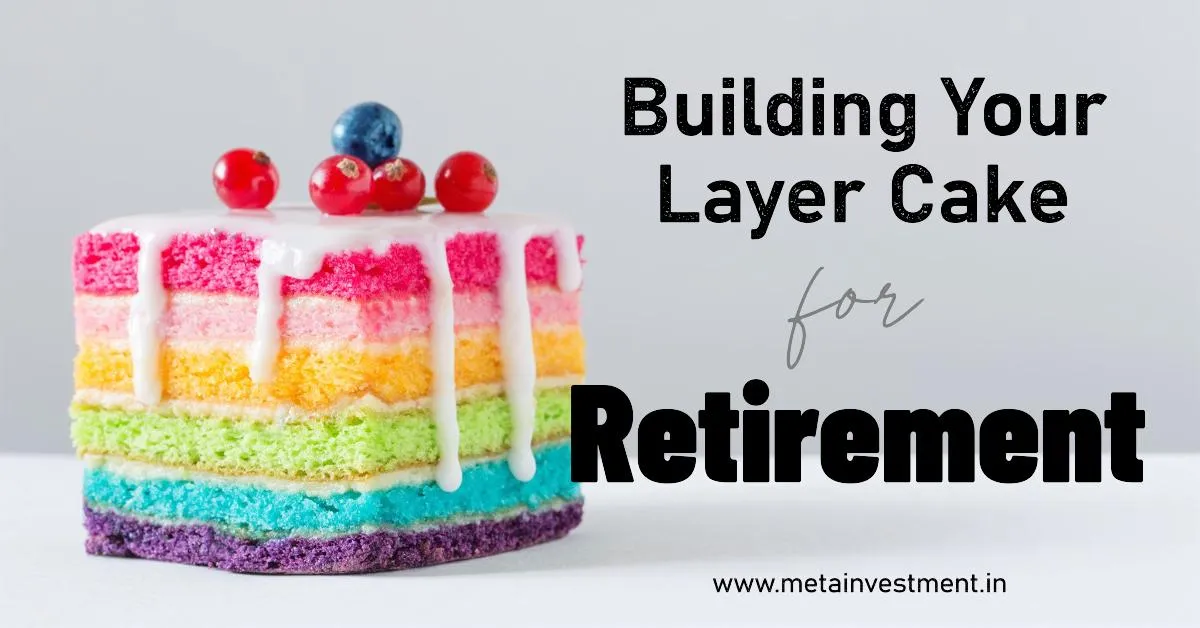Retirement planning can seem like a daunting task. With so many variables to consider, finding the right strategy to ensure long-term financial stability is essential. William Bengen, a well-known figure in retirement research, introduced the Layer Cake concept—a powerful and flexible approach to structuring retirement income. Let’s explore this concept in depth and understand how it can improve retirement planning.

Understanding William Bengen’s Contribution
Before diving into the ‘Layer Cake,’ it’s essential to know the mastermind behind it—William Bengen. Bengen is most famous for creating the 4% rule, which became a staple for retirees planning their withdrawals. His research revolutionized how people approach retirement income by offering a guideline for sustainable withdrawals from an investment portfolio. But Bengen didn’t stop there. The ‘Layer Cake’ approach is another significant contribution, adding an innovative layer to traditional planning
While initially conceived for US investors, the principles can be adapted to suit the specific needs and circumstances of Indian investors.
What is the ‘Layer Cake’ Concept?
The ‘Layer Cake’ concept is a strategy for retirement income planning that organizes different streams of income into layers. Each “layer” represents a specific source of retirement funds, like Social Security, pensions, or portfolio withdrawals. By diversifying income sources, retirees reduce the risk of relying too heavily on one type of asset or investment.
Layers of the ‘Layer Cake’
To fully grasp the ‘Layer Cake,’ let’s break down the different layers that can form this retirement strategy:
Social Security
The foundational layer of most retirement plans is Social Security. As a guaranteed, inflation-adjusted income source, it’s often the most reliable part of the cake.
Pensions
For those lucky enough to have pensions, this forms another secure layer. Like Social Security, pensions typically provide stable, regular payments throughout retirement.
Investment Portfolio Withdrawals
Bengen’s famous 4% rule falls into this category. This layer involves regular withdrawals from personal retirement accounts (e.g. NPS, EPF, PPF)
Annuities or Insurance Products
Annuities can provide a steady stream of income and can be a crucial layer for those who want more security and less exposure to market volatility.
Other Income Sources
Other possible layers might include real estate income, part-time work, or business ventures. These add flexibility to your retirement plan and help cover any gaps in your income.
How the ‘Layer Cake’ Approach Improves Retirement Planning
The ‘Layer Cake’ approach offers a variety of benefits for retirees:
-
Diversification of Income Streams: By stacking different income sources, you reduce the risk of outliving your money.
-
Risk Mitigation: Multiple layers of income create a safety net, insulating you from economic downturns or market crashes.
-
Consistency: Since some layers, like Social Security or annuities, offer guaranteed payments, they provide stability to offset more volatile layers like investment withdrawals.
The flexibility and customization of the ‘Layer Cake’ make it one of the most powerful tools in financial planning. You can adapt it to fit your lifestyle, goals, and risk tolerance. Whether you’re a conservative saver who values guaranteed income or a more aggressive investor willing to tolerate some volatility, the ‘Layer Cake’ can be tailored to your needs.
The Role of the 4% Rule in the ‘Layer Cake’
Bengen’s 4% rule is essential to understanding the ‘Layer Cake.’ This rule helps determine a sustainable withdrawal rate from your investment portfolio, which becomes one of the layers. While the 4% rule isn’t foolproof, it serves as a guideline for ensuring your assets last throughout retirement.
Pros and Cons of the ‘Layer Cake’ Concept
Pros
-
Risk Reduction: Diversifying income streams lowers the risk of running out of money.
-
Flexibility: You can adjust the layers over time based on your changing needs.
-
Sustainability: Properly managed, the ‘Layer Cake’ can provide income for life.
Cons
-
Complexity: Managing multiple income sources can be more complicated than relying on just one or two.
-
Uncertainty: Some layers, like investment withdrawals, are dependent on market performance.
Who Should Use the ‘Layer Cake’ Approach?
The ‘Layer Cake’ is ideal for individuals who want a diversified retirement income strategy that adapts to their unique situation. Those who have various income sources—like Social Security, pensions, and investment portfolios—will benefit the most. However, if your retirement plan relies heavily on just one income source, the ‘Layer Cake’ might be challenging to implement.
How to Build Your Own ‘Layer Cake’
Building a successful ‘Layer Cake’ involves understanding your income sources and planning strategically. Here’s a step-by-step guide:
-
Identify Your Income Sources: Start by listing your guaranteed and potential income streams.
-
Categorize into Layers: Organize these streams based on their reliability (e.g., Social Security at the base, investment income higher up).
-
Allocate Assets: Distribute your investments across multiple asset classes based on your goals and risk tolerance.
-
Determine Withdrawal Rates: Apply Bengen’s 4% rule or other methods to determine safe withdrawal rates from your investment portfolio.
-
Adjust Over Time: Keep revisiting your layers as you age or your financial situation changes.
Adapting to Indian Investors
While the basic concept of Bengen’s Layer Cake remains applicable, Indian investors need to consider the following factors:
-
Market Volatility: The Indian stock market can be volatile. Therefore, it’s essential to maintain a balanced portfolio, especially during retirement when income stability is crucial.
-
Tax Implications: India has a complex tax system. Understanding the tax implications of different investment options is crucial to maximize returns.
-
Regulatory Framework: Indian investors need to be aware of the regulatory framework governing investments, including SEBI regulations and KYC norms.
-
Cultural Preferences: Indian investors often have a preference for physical assets like gold. While gold can be part of a diversified portfolio, it’s essential to consider its liquidity and returns.
Bengen’s Layer Cake offers a structured approach to retirement planning. By understanding the concept and adapting it to the Indian context, investors can increase their chances of achieving financial security in their retirement years.














